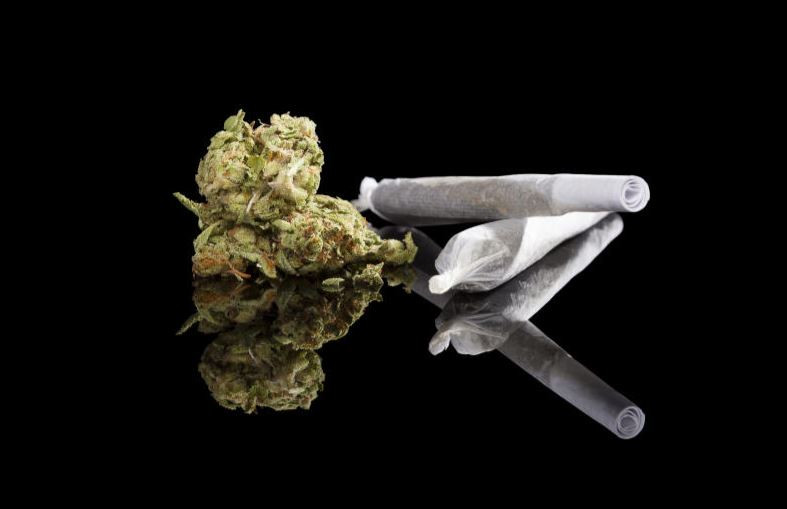Youth Battle Cannabis Use and Addiction

Drug abuse among young people in Kenya represents a deeply troubling and continuously escalating public health crisis, impacting not only the physical and mental well-being of individuals but also having profound consequences for families, educational institutions, and the broader society. This alarming trend is illustrated by the experiences of individuals like Elkannah Koroso, now 21, who quietly admits to starting drug use, specifically bhang, in Form Two during the Covid-19 pandemic-induced school closures. His story is not unique; the National Authority for the Campaign Against Alcohol and Drug Abuse (NACADA) reports that over 500,000 young Kenyans aged 15 to 24 are currently struggling with substance use disorders.
Cannabis stands out as the most widely abused drug among this demographic, followed by alcohol, miraa (khat), and more potent substances such as heroin and cocaine. Dr. Boniface Chitayi clarifies that the term “cannabis addiction” has been superseded by “cannabis use disorder,” explaining that this condition, much like other forms of substance abuse, frequently begins with mere experimentation. This initial contact may evolve into recreational use and, for some, progress into a full-blown disorder where the individual loses control. Dr. Chitayi emphasizes that not everyone who experiments will develop a disorder, as progression is influenced by a complex interplay of individual factors, including biological predisposition, chronic stress coupled with inadequate coping mechanisms, and peer pressure. Young people who initiate cannabis use at an early age and do so frequently are particularly susceptible.
For Elkannah, peer pressure played a pivotal role, driven by a desire to conform with friends from Nairobi who glamorized drug use and late-night partying. He confesses, “I just wanted to be part of the group. We used to do it late at night while others were asleep. I got used to it. In fact, I loved it.” The severity of the situation is further underscored by NACADA’s 2022 Status Report on Drugs and Substance Abuse in Kenya, which reveals that one in every five Kenyan youths has experimented with drugs by the age of 19. Disturbingly, in counties like Nairobi, Kisii, and Kisumu, drug dealers readily access secondary school students, with school fences often serving as drug drop-off points and dormitories covertly transformed into hidden drug dens.
The World Health Organization (WHO) has also raised concerns about the long-term repercussions of early drug use, noting in a 2023 bulletin on youth mental health in Africa that “substance use during adolescence interferes with brain development, increasing the risk of depression, psychosis, and engagement in risky behaviour.” David Ouma, 24, from Oyugis in Homa Bay County, echoes a strikingly similar narrative. A heavy cannabis smoker in Nairobi, David found his addiction exacerbated by the isolation, idleness, and financial strain brought on by the Covid-19 pandemic. “Drugs became my only companion. There wasn’t a single day I went without them,” he recounts. His journey into addiction, too, began with peer pressure, as friends made drug use seem “normal, even cool.” Despite initial resistance, he persisted and by late 2022, was fully dependent, needing cannabis to perform daily functions and even mixing it with food.
The ramifications of addiction quickly manifested for both Elkannah and David. Elkannah, once a high-achieving student with a B+ average, saw his grades plummet to a C–, a truth he only disclosed to his mother after failing his Kenya Certificate of Secondary Education (KCSE) exams. Dr. Chitayi details the severe toll cannabis takes on the body and mind: physically, it can lead to lung inflammation, persistent coughing, chest pain, and significantly elevate the risk of lung cancer, as well as increasing the risk of cardiovascular conditions like high blood pressure, heart attacks, and strokes. Mentally, the gravest consequence is psychosis, but even prior to that, frequent use can precipitate anxiety, depression, and other mood disorders. He adds that cannabis impairs concentration and memory, causing users to neglect responsibilities and damage relationships through erratic behavior and mood swings.
Despite these daunting challenges, both Elkannah and David successfully reclaimed control over their lives. Elkannah proudly shares, “I quit last year. I went for counselling and stayed clean from February to June. Now, I’m back in university with a renewed sense of purpose.” David’s transformation is equally inspiring; intervention from his church pastor and friends led him to realize the dangers of drug abuse. “I’m no longer an addict. A friend gave me a small amount of money, and I used it to start a poultry business. That’s what I’m focused on now, rebuilding my life,” he states, adding that quitting has brought him mental clarity and emotional strength, allowing him to invest in his future rather than drugs.
However, their stories of recovery are unfortunately the exception rather than the norm. Most young addicts in Kenya lack access to necessary support. NACADA reports that out of 1,200 rehabilitation centers nationwide, only 14 are government-operated and affordable, rendering the majority of private facilities financially inaccessible for most families. Dr. Chitayi explains that quitting often precipitates intense withdrawal symptoms, including anxiety, low mood, insomnia, poor appetite, and intense cravings, which without professional support, can lead to relapse. He stresses that professional intervention—comprising a personalized treatment plan, counseling, and support from family or peer groups—is vital, and advises those in recovery to explore new hobbies that encourage social interaction to fill the void left by drug use.
Both Elkannah and David advocate for urgent government action. Elkannah calls for more extensive awareness campaigns in schools, moving beyond mere warnings to foster genuine conversations about drugs and mental health, alongside establishing accessible rehab centers that young people can enter without fear or shame. David concurs, asserting that young people resort to drugs due to feelings of hopelessness, a lack of jobs and opportunities, and the absence of discourse on the burgeoning mental health crisis. He warns that ignoring this issue risks losing an entire generation. Dr. Chitayi concludes by affirming that cannabis use disorder is treatable with the correct approach, encompassing medical support for withdrawal, psychological therapies for coping mechanisms, and social rehabilitation through support groups like Narcotics Anonymous. He emphasizes the critical need to address any underlying mental health conditions. He underscores that “Cannabis use disorder is a disease, not a moral failing. People who are struggling deserve compassion, professional care, and space to heal. Whether they’re students or workers, they need time off to recover and support from their communities. A proper psychiatric assessment is the first step in helping someone rebuild their life.”









